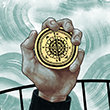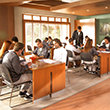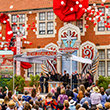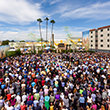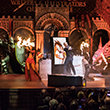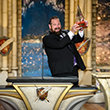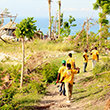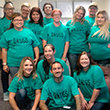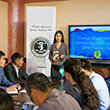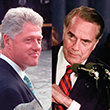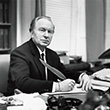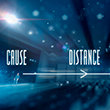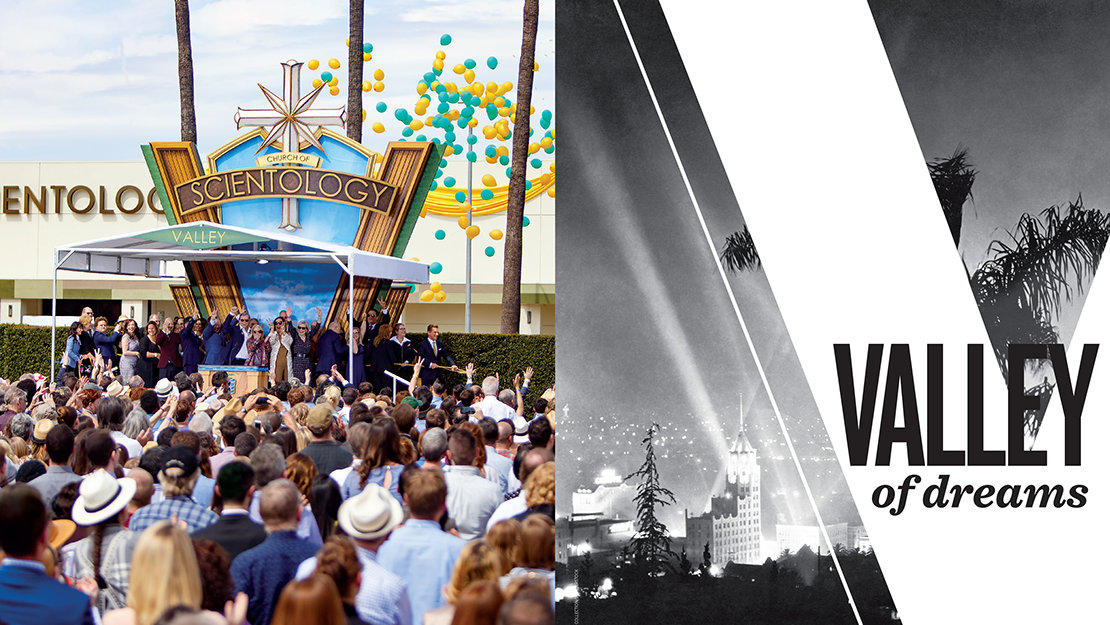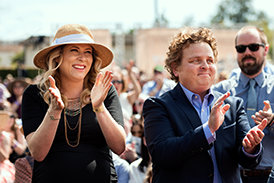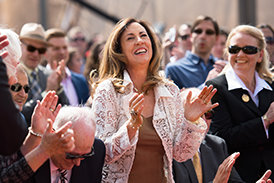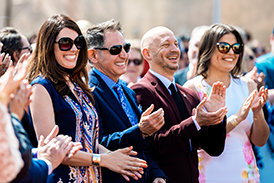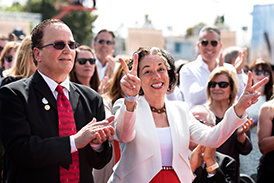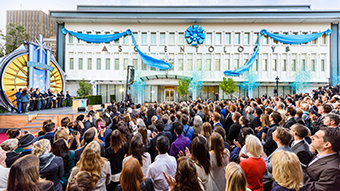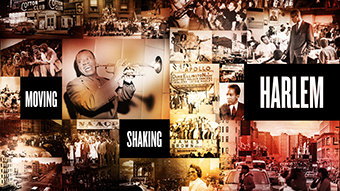A flat basin stretching 20 miles in length and nearly 12 miles in breadth, the San Fernando Valley is large enough to contain the entire city limits of San Francisco, Washington and Boston—with, as one native son cannily observed, room to spare for Beverly Hills. Home to 1.8 million demographically diverse people, “the Valley,” as the area is popularly called, is a sprawling, sun-soaked mass of asphalt, modernist architecture and enough greenery to sustain deer, bobcats and coyotes.
First-time visitors seldom have trouble recognizing this archetypal suburb of America, partly because it’s both a place and a state of mind. After all, the Valley, which is named after a mission founded in 1797 by Franciscan priests, has served as the backdrop for thousands of Hollywood films and television episodes.
Local landmarks such as Universal Studios and Warner Bros. Studio have manufactured cinematic delights that offer a kind of salvation not just to America but the whole world. Every film historian remembers The Birth of a Nation, the visually striking three-hour silent epic about the Civil War that was instantly hailed as a revolutionary work of art when it premiered in 1915. Shot on grassy hills along the Los Angeles River that once ran through the Universal lot, the masterpiece is a remarkable example of technology’s triumph over history: the Civil War’s ferocious battle charges were captured by cameras positioned inside trenches. The eminent novelist and film critic James Agee praised the movie not so much for its bold realism, which some disapproved of, but rather the “realization of a collective dream.”
On March 19, not far from where the film was shot, some 5,000 Scientologists and their friends and supporters gathered to celebrate the fulfillment of another collective dream destined for the history books: the grand opening of the new Church of Scientology Valley. The new incarnation of a Church that has been serving the Valley for the past 45 years, the facility boosts to 19 and 57, respectively, the number of new Scientology Churches in the Western United States and internationally.
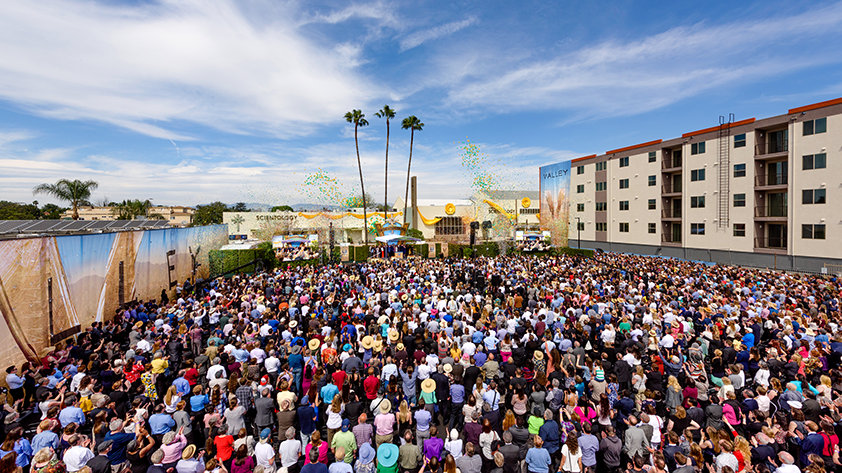
Boom Town
Located at 11455 Burbank Boulevard, the Church of Scientology of the Valley stands on a four-acre plot in North Hollywood, a formerly peach-growing area that went by the name of Lankershim and once claimed the world’s largest apricot tree. Facing the Verdugo Mountains, which mark the Valley’s eastern rim, the Church is adjacent to two main boulevards—Burbank and Lankershim—that meet at a trisection through which some 60,000 vehicles pass every day.
The area is a hub of commercial and community life, populated by film legends and rock stars—and the Church is strategically located in the heart of it all. Step onto the pavement along Burbank Boulevard in one direction and you’re a five-minute walk from the North Hollywood Police Station. In the opposite direction, just a few blocks away, lies the NoHo Arts District, a thriving enclave of the arts and a center for painting, ceramics, theater and television.
In a region where most major buildings occupy a niche amid a network of obsessively perpendicular avenues and feeder streets, the Church consists of two interlocking sand-colored structures spanning 95,000 square feet. It’s the largest local Church of Scientology in the United States, and the second largest in the world. And it’s right in the midst of Los Angeles County, which has the highest concentration of Scientologists in the world, thousands of them residing in the San Fernando Valley.
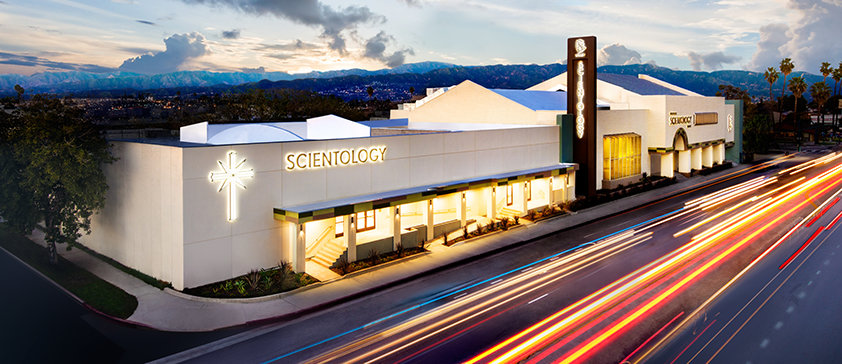
“Today, we dedicate a Church of Scientology for this Valley of Dreams,” said Mr. David Miscavige, ecclesiastical leader of the Scientology religion, at the Sunday afternoon celebration. “As the San Fernando Valley is diverse, so too, is our help. And so, we welcome those from her myriad cultures, ethnicities and of any economic standing.”
The new Church organization’s openheartedness is a perfect reflection not just of the Valley as an oasis of hospitality and civilization, but of the Church’s very creed as Scientology Founder L. Ron Hubbard expressed it, and which Mr. Miscavige quoted thus: “That all men of whatever race, color or creed were created with equal rights. … And that the souls of men have the rights of men.”
Every new Church of Scientology, Mr. Miscavige said, “draws from its own deep well of legends.” As it happens, the folklore surrounding the Valley Church evokes the region’s pastoral heritage. “Your water rights and grazing rights,” as Mr. Miscavige put it to parishioners, helped transform a parched grassland into an urban environment after an abundant supply of water from the fabled Sierra Nevada mountains was piped an astonishing 233 miles across the Mojave Desert into the Valley in 1913.
“V for Valley”
As palm trees swayed and wispy clouds floated against a clear blue sky, the dedication ceremony kicked off with an assortment of classic scores that called attention to the golden days of cinema. This was a formidable, live presentation of symphonic film music—the kind that can stand on its own in any concert hall. But this being a celebration of Scientology, the crowds were in for yet more music—accompanied by lyrics this time. In a vibrant performance titled “V for Valley,” vocalists sang an anthem written and arranged especially for the grand opening occasion.
At the start of his dedication speech, Mr. Miscavige explained what the “V” in Valley signifies at this juncture in the region’s history. The letter “now stands for Victory, and that Victory belongs to you,” he proclaimed—alluding to the culmination of four and a half decades of dedicated work by local parishioners and Church staff to serve the sprawling Valley and to realize the Church of their dreams.
A quick historical overview of Scientology in the Valley reveals roots that predate the religion itself.
As it happens, Scientology Founder L. Ron Hubbard lived in North Hollywood in the 1940s, where he pursued his writing career and used the principles of Dianetics to help people, including Hollywood actors. Many of his experiences in the Valley served as material for his later works. His Valley days also coincided with his service as a special officer for the Los Angeles Police Department (LAPD), a task that took him to some of the toughest streets in downtown L.A. “It was there that I learned the criminal is solvable,” LRH, as he is widely known, said in a lecture on December 16, 1952.
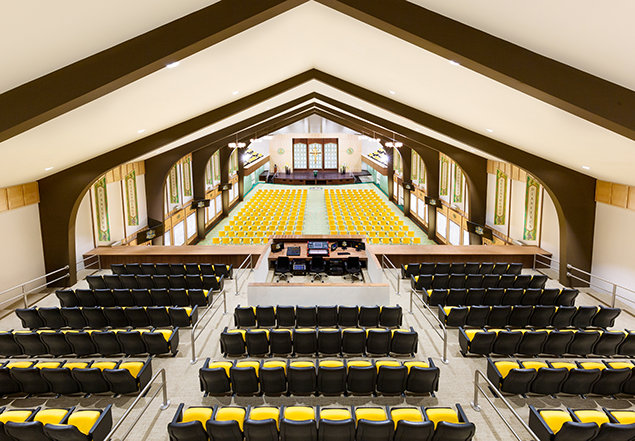
Coming of Age
The new Church, which serves the San Fernando Valley as well as neighboring Santa Clarita Valley, is 10 times bigger than the previous Church premises in Van Nuys. “The new building represents us very well,” says Kathy Welch, a parishioner at the Valley Church for the past 15 years who chaired the committee responsible for the fundraising effort. “In terms of the look, location and size, we will be able to deliver so much more to the community and to our parishioners.”
The new Church has an expansive, high-ceilinged chapel that is the largest of any local Church of Scientology in the world to date. Capable of seating more than 1,000 people at a time, the chapel has three balconies and a state-of-the-art audiovisual system. All of that makes it well suited to serve as an auditorium for Church events, social betterment programs, or as a venue for banquets and seminars, not to mention community groups engaged in nonprofit activities.
The chapel is flanked by two corridors, one of which offers a majestic view of the Valley floor and the Verdugo Mountains beyond. The other corridor faces an outdoor café contiguous to a children’s playground in the backyard. The outdoor play area is a unique, family-centric feature. What’s more, the Valley Church has an entire building reserved for kids, right next to the playground, replete with a tutoring room and a lunchroom.
Unlike other facilities whose structures had to be completely transformed to suit the requirements of a new Church of Scientology, the Valley Church was already a place of worship for a Christian parish. As a result, the building fortuitously had many of the features that lend themselves to being Church organization spaces.
Perhaps the most striking aspect of the building is that its façade is typical of the Valley’s modernist architecture. Which is to say that it doesn’t have any old-world charm. Instead, the contemporary look “makes a bold statement of who we are,” says Welch, adding that the Church’s objectives have been nurtured by its long-standing motto: “Change the Valley, Change the World.”
Welch, who has been a Scientologist for the past 44 years, explains that because there is a high concentration of the news and entertainment media in the Valley, making it a better place can have a ripple effect across the nation and beyond. “Our passion,” she says, always revolved around the idea that “the Valley has the power to change the world.”
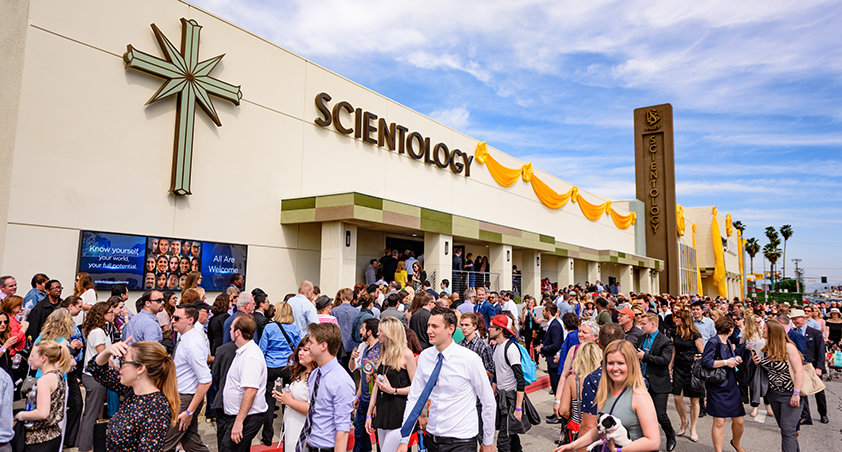
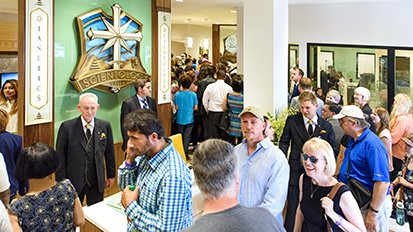
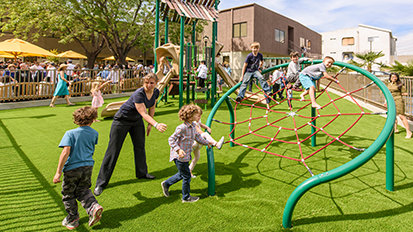
Overcoming Challenges
It’s a calling that is cemented into the Church’s numerous partnerships with key communities and their leaders, some of whom spoke at the opening ceremony. Making communities safe and secure requires a range of social interventions such as early education, support for at-risk kids and “communication, respect and cooperative programs carried out between law enforcement and civic organizations,” said Robert Green, deputy chief of the LAPD Valley Bureau, who has worked with Church members for nearly a decade.
“When I started taking the prevention path,” said Green, referring to the crucial interventions that help keep youth out of the criminal justice system, “I found myself walking alongside the Church of Scientology.” He added: “I’ve been impressed by your constant commitment to rolling up your sleeves and making a better community.”
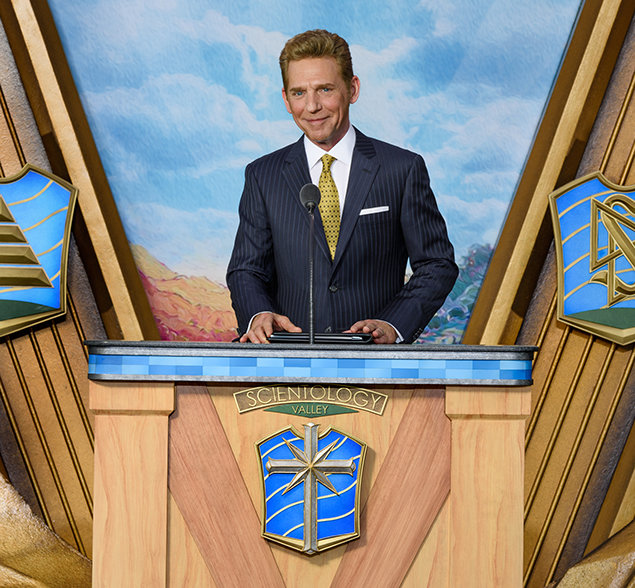
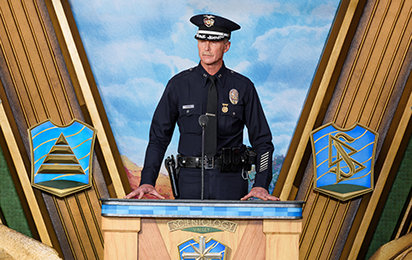
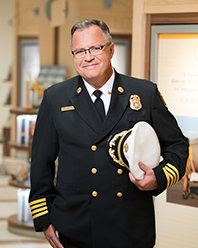
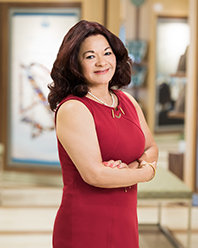
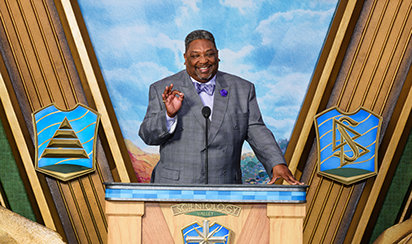
Green said he was so impressed by the Church’s Truth About Drugs seminars that the LAPD expanded the program locally to an entire series that includes The Truth About Gangs and The Truth About Domestic Violence. “We have changed the course of over 25,000 lives across the Valley,” he said.
The deputy police chief also praised the Church’s interfaith leadership. “You’ve been pivotal in unifying the faith-based movement that is offering and supporting alternative solutions,” he said. “You are not only forging a public trust, but you’re safeguarding our future. That’s what I call: ‘living the faith.’”
Los Angeles Fire Department Deputy Chief Trevor Richmond commended Scientology Volunteer Ministers for their humanitarianism during the devastating 1994 Northridge earthquake in the Valley.
“Buildings, parking lots and even sections of major freeways collapsed,” he recalled, noting that some 125,000 people were left temporarily homeless. Volunteer Ministers brought more than 40 truckloads of rations and 10 tons of provisions, the deputy fire chief said, adding: “Day after day, week after week, for more than 10,000 volunteer hours, you committed yourselves to the city and our people.”
The Valley Church’s vital and reliable partnership in community affairs was further underscored by Nellie Barrientos, Los Angeles education program director for a federally-funded plan that supports some of the poorest and neediest children in the nation’s second-largest school district after New York City.
Barrientos recalled how a Valley Church member had introduced her to Mr. Hubbard’s Study Technology after noticing that many of her students weren’t doing well in their studies. “I remember one sixth-grader who was failing her grades,” she said. “After just four weeks of tutoring, she was among the best in the class. It’s impossible to forget her mother’s tears when she saw how such a simple, powerful tool had opened a new world of opportunity for her daughter.”
Similarly, the Church’s efforts to introduce the principles of The Way to Happiness booklet into the lives of youth have been nothing short of revolutionary in many communities. “When I first read the [booklet’s] 21 precepts, a light hit for me,” recalled Bishop Franklin Harris, pastor of the Laurel Street Missionary Baptist Church in South Los Angeles. “I saw that it was parallel with God’s word … full of everyday miracles.”
Harris offered “living proof” of his claim. “Since I started with The Way to Happiness,” he said to loud applause, “we haven’t had a homicide in our communities for more than three years.”
The fact that Scientology has helped so many people over the decades—and that many of them want nothing more than to help others—is what animates Scientologists everywhere. And it’s fair to say that there’s probably no better place than the Valley, with its unrivaled access to media and a population greater than that of 12 states, where the good that Scientologists do can have a more far-reaching effect.
Besides, as Barbara Wilson, executive director of the Valley Church, aptly puts it, this self-sufficient swirl of wilderness and suburbia, which once tried to secede from Los Angeles, has so many families. “And the selfish part of it,” she added, “is that it’s really rewarding to help them.”



